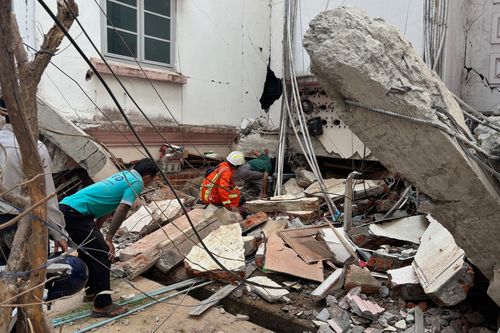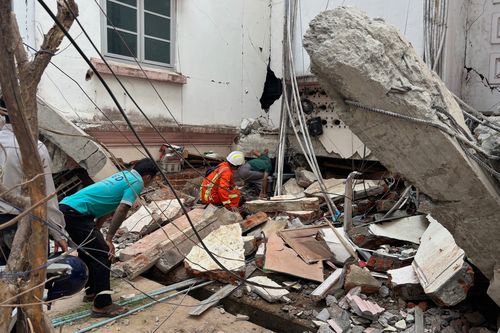Share this @internewscast.com
The country’s death toll from the disaster soared to 1,644.
The number of injured increased to 3408, while the missing figure rose to 139.

Despite the quake, military forces persisted in their attacks, launching three airstrikes in northern Kayin state, also known as Karenni state, and southern Shan, both adjoining Mandalay state, according to Dave Eubank, a former US Army Special Forces soldier and founder of the Free Burma Rangers, a private aid organization.
Eubank informed the AP that in the location where he was operating, most villages had been previously devastated by the military, so the earthquake had minimal impact.
“People are in the jungle and I was out in the jungle when the earthquake hit – it was powerful, but the trees just moved, that was it for us, so we haven’t had a direct impact other than that the Burma army keeps attacking, even after the quake,” he said.
Earthquakes are rare in Bangkok, but relatively common in Myanmar.
The country sits on the Sagaing Fault, a major north-south fault that separates the India plate and the Sunda plate.
Brian Baptie, a seismologist with the British Geological Survey, said that the quake caused intense ground shaking in an area where most of the population lives in buildings constructed of timber and unreinforced brick masonry.
“When you have a large earthquake in an area where there are over a million people, many of them living in vulnerable buildings, the consequences can often be disastrous,” he said in a statement.















